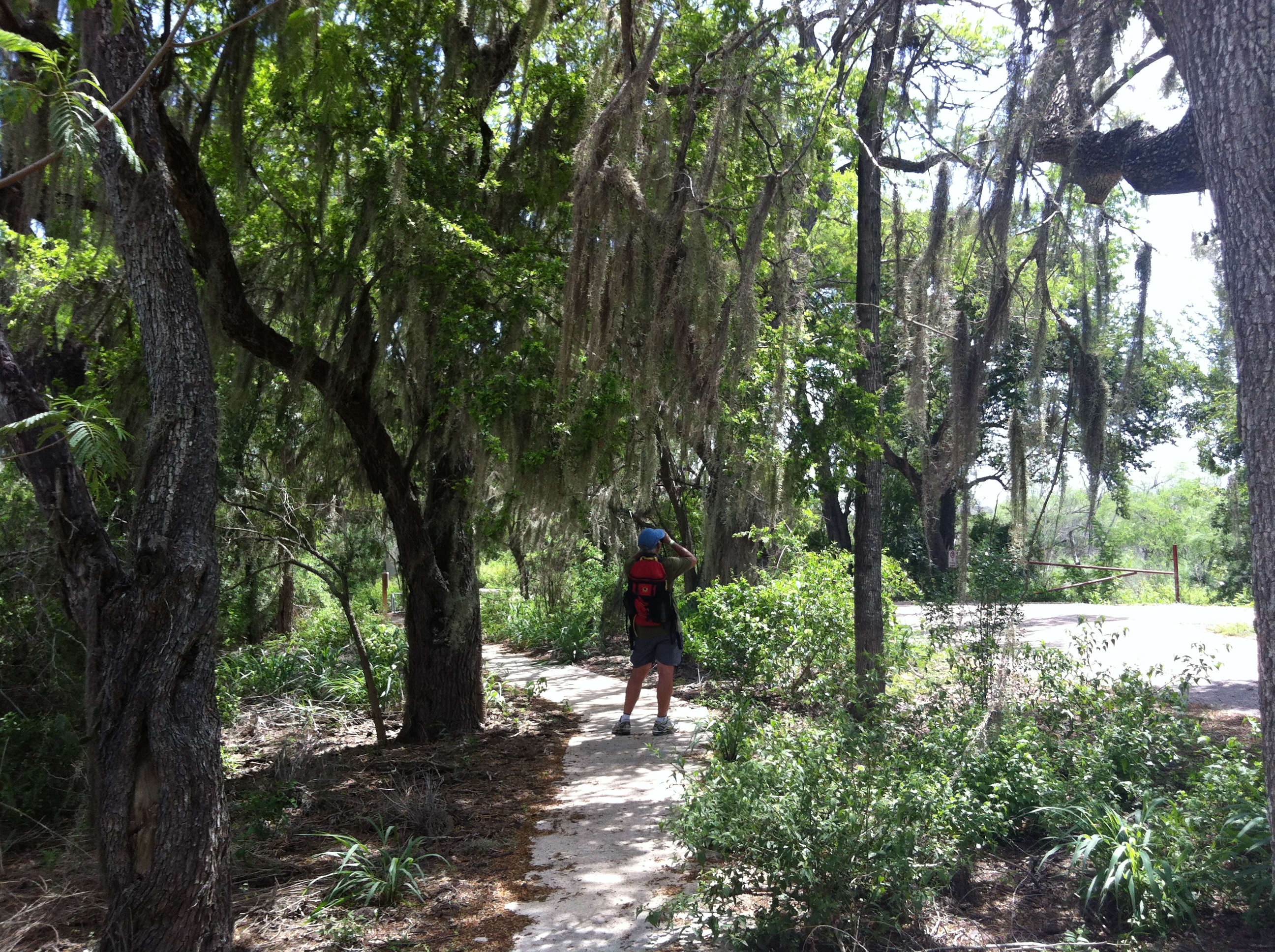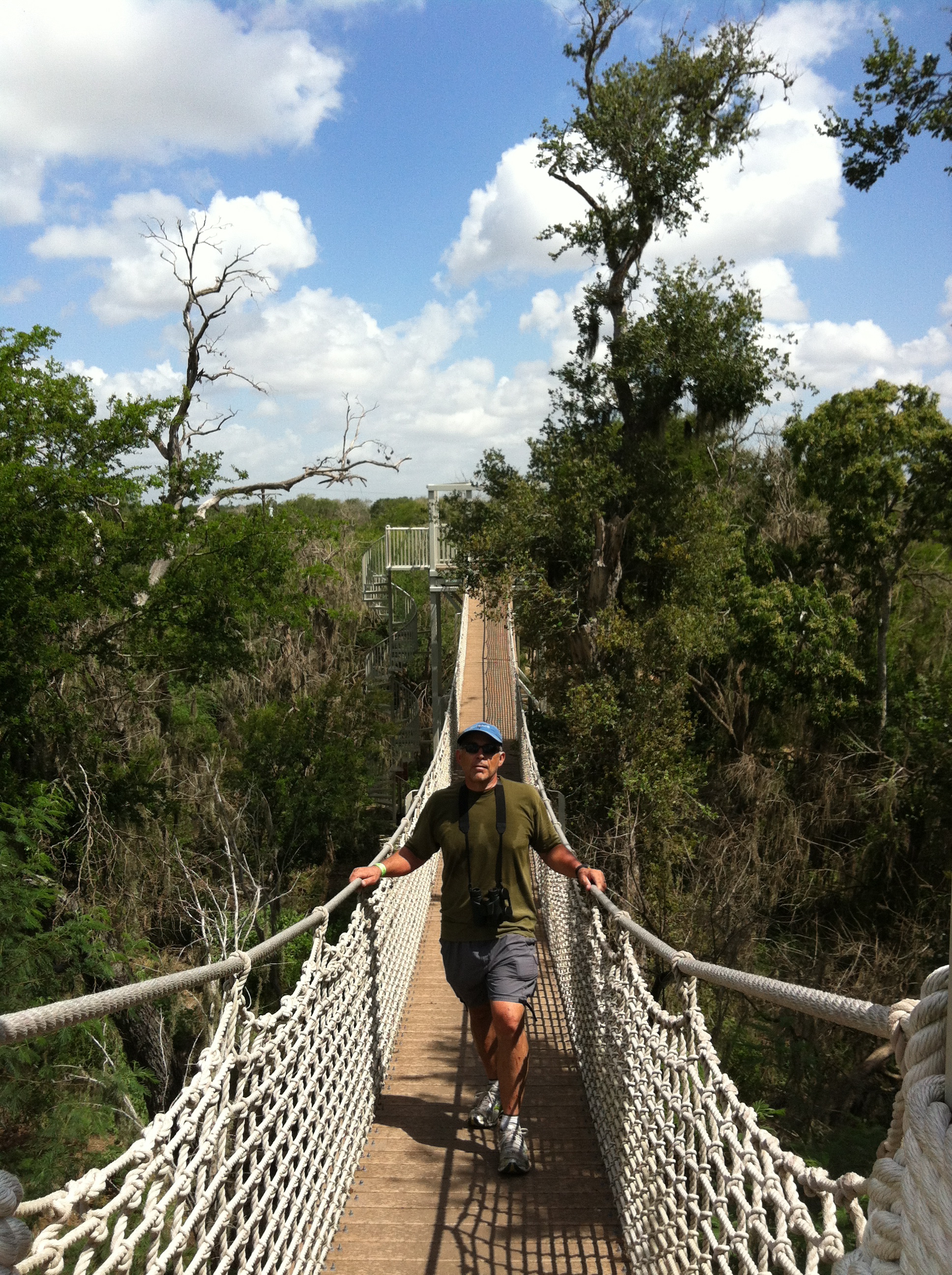For a fun outdoor getaway filled with butterflies and birds, look no further than Alamo, Texas. No, not The Alamo. Alamo, Texas.

Empress Louisa butterflies at the Alamo B & B Inn
The small town in Hidalgo County may seem like an unworthy stop on the drive to South Padre Island with its strip malls and fast food joints dotting the highway. But the former headquarters of the Alamo Sugar and Land Company sits in the center of the Rio Grande Valley and makes a perfect base for exploring the bird and butterfly hotspots of South Texas.
A Fourth of July trip took Bob and me to the National Butterfly Center, the Global Birding Center and the Santa Ana National Wildlife Refuge in a 48-hour off-season nature sojourn that made us want to rebook in the “high season” of October or March.
We stayed at the Alamo Inn B & B, a historic naturalists’ retreat just five miles from the fabulous Santa Ana Wildlife Refuge. Our new friend Ro Wauer, butterfly guidebook author extraordinaire, who we met at the Wings Over the Hills Festival in Fredericksburg this spring, recommended it highly. And despite the historic part of the hotel being closed for the off-season, Proprietor Keith Hackland made us feel welcome with his profound hospitality, charming South African accent, and dog friendly accommodations in adjacent studio apartments (Cost: $78 per night). Our dog Cocoa made friends with Hackland’s sweet pooch Henry, and roamed a huge, fenced yard.
Hackland offered hefty 20-page handouts of bird species we were likely to see upon check-in, retrieved from his well-stocked outdoor store which was also closed for the off-season. Alas, we’re not serious birders and I’m a novice (but extremely enthusiastic) lepidopterist, more interested in the whole life cycles of plants, creatures and ecosystems than checking species off a life-list. Yet the pages and pages of species had me intrigued: were there really 500 species of birds and at least 200 different butterflies cruising the area around our hotel? Apparently so.

Termite hatch left bug detritus everywhere
We arrived Sunday afternoon and planned a late morning visit to the National Butterfly Center. (One of the best things about chasing butterflies is that they don’t get up early.) As we sat on our front porch Sunday evening and watched buff-bellied hummingbirds nectar on Turk’s Cap, a thunderstorm blew in, dropping a quarter-inch of rain on the Alamo Inn’s garden.
Ten minutes later, a torrent of flying creatures filled the air–a massive hatch like we had never witnessed. I thought at first they were Mayflies, but Hackland nabbed one with one hand and provided a positive I.D.: termites. “This happens pretty regularly after it’s been dry,” he said.
The next day, Empress Louisa, Asterocampa louisa, butterflies filled the air at the National Butterfly Center. They fluttered along the pathways, nectared on lantana, and rested on miniature log roosts assembled by the Center. This video provides a great overview.
The 100-acre park, opened in 2004, is a project of the North American Butterfly Association, which planted hundreds of host plants to draw butterflies from all corners of the Valley and northern Mexico. More than 200 species have been identified along the Center’s trails.

World Birding Center Headquarters in Mission, Texas, photo courtesy Lake|Flato Architects
Ambling the park-like grounds last week, we saw Queens, Sulphers, Whites, Swallowtails, Zebra Longwings, unusual hairstreaks and brush foots. We had the place to ourselves, and enjoyed the solitude in spite of a muggy heat. Tip: be sure to bring your own snacks and drinks as the Butterfly Center offers no refreshments. According to office manager Flora Vela, the Center had contracted with a restaurant to open a cafe on the premises earlier in its history, but the deal fell through.

At the Santa Ana Wildlife Refuge in the Rio Grande Valley
Next stop: the World Birding Center ecotourism headquarters, built by San Antonio’s AIA Firm of the Year, Lake|Flato Architects. The award-winning building anchors nine birding destinations that dot the Valley and draw thousands of ecotourists each winter. Unfortunately our trip here was cut short by another downpour. A lovely Black Witch Moth kept us company under the eaves of the magnificent galvanized metal quonset-hut style patio. As a drumbeat of raindrops pounded on the tin roof, we were able to observe the rainwater collection system in action. It felt like the tropics.

Bob Rivard on the Canopy Walk at Santa Ana National Wildlife Refuge
At the Santa Ana National Wildlife Refuge, some of the wetlands were dry, but those back-to-back thunderstorms created a steamy, fertile backdrop for a hike. We hoped to spot the Valley’s signature Green Jay, and helpful attendants at the front desk offered to spread birdseed in the feeding area to increase our chances.
No luck, but Kiskadees, Golden-fronted Woodpeckers, and other flying creatures kept our walk interesting and the screaming cicada chorus and tropical bird sounds provided an apt soundtrack as we traversed the Canopy Walk and climbed the Tree Tower.
An off-season visit has the advantage of no crowds, but we’re already planning our high season return.


Thanks for finally talking about > Alamo, Texas, a
Great Base for South Texas Sojourn of Bugs, Butterflies and Birds
| texasbutterflyranch < Loved it!